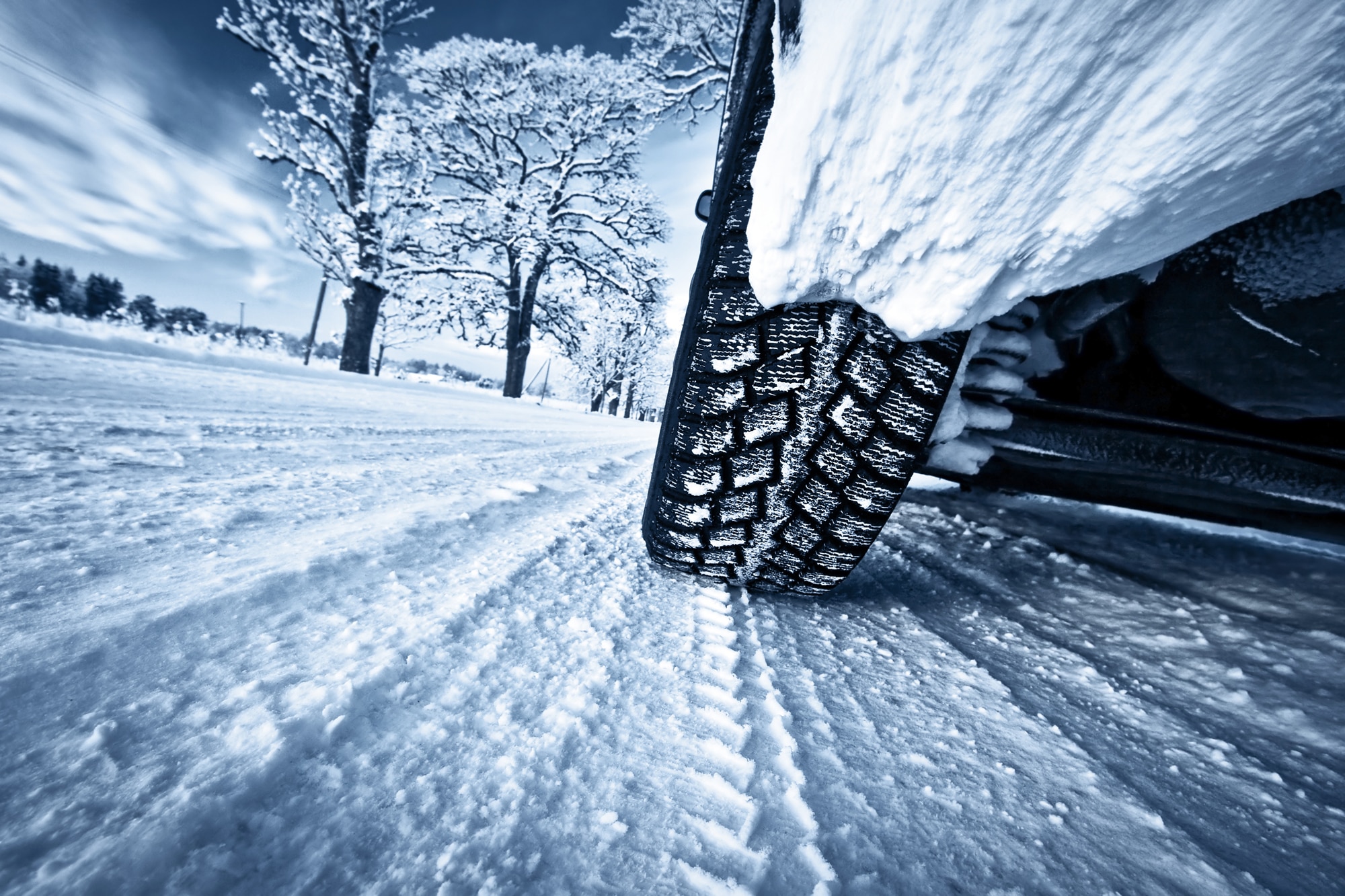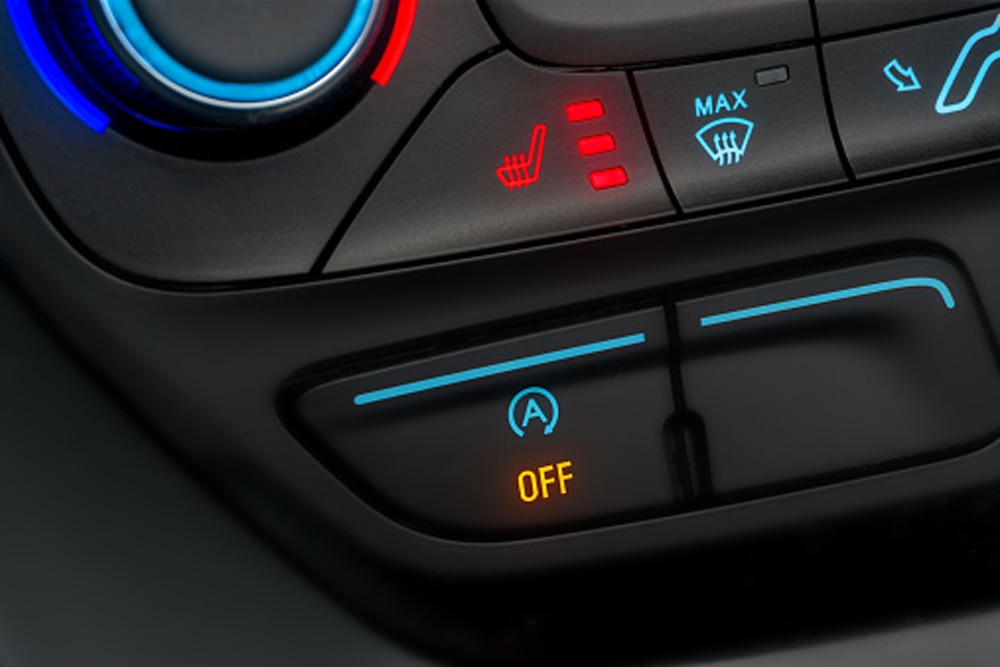Make Winter Driving Safer, Easier, and Comfortable with These Features
If you drive in snow or freezing temperatures, these features deliver the extra heat, grip, and comfort you'll want with your next car.
 Getty Images
Getty Images
Winter is often the most challenging driving season if you live in a part of the country where the climate throws snow and ice into the mix when the cold weather arrives. Fortunately, in recent years automakers have gotten serious about stuffing cars, trucks, and SUVs with the kind of gear that will keep you warm and toasty during the frozen months of the year, matched with winter-specific equipment that safeguards your on-road experience every time you turn the key.
What are some of the must-have features for combating winter's chill? Here's what you should look for in a vehicle to ensure a pleasant and predictable ride as you go dashing through the snow.
 Shutterstock
Shutterstock
Tires and Traction Make All the Difference
The most important aspect of staying safe on the road in the cold is what tires you choose for your vehicle. Once temperatures drop below 45 degrees Fahrenheit, the rubber compound in both summer and most all-season tires becomes too stiff to provide their maximum grip for stopping accelerating, and cornering, even on dry pavement. Winter tires (featuring a logo with mountain peaks and a snowflake on the sidewall) provide traction even in sub-zero conditions, and their more aggressive tread will help better deal with snow and slush. Remember to inspect your tires each season before installation to ensure their tread hasn't worn down past the replacement indicators.
For those who regularly deal with unplowed roads or ice-slicked driveways, all-wheel drive is another helpful feature. Stalwarts like Audi and Subaru have been joined by nearly every other automaker in offering all-wheel drive in many different models. Remember that, unlike winter tires, all-wheel drive is only useful for keeping you from getting stuck. It won't help you brake or corner more effectively.
For deeper snow, you'll need to pair traction at all four wheels with enough ground clearance to prevent front bumper build-up or under-car accumulation from stopping you in your tracks. This combination makes the added ride height provided by crossovers and SUVs an appealing winter prospect, but keep in mind that a taller vehicle also has an increased risk of a roll-over in an emergency.
Finally, consider the benefits of the various electronic driving aids installed by automakers to improve winter safety. Electronic stability control (ESC) is standard across the board on post-2012 vehicles, helping to reduce fishtailing or sliding in low traction conditions. Many vehicles pair ESC with a dedicated “winter” or “snow” driving mode that also dials back throttle response and often selects a less aggressive gear when accelerating with an automatic transmission. The aim of the game is to reduce wheel spin, with some advanced systems also actively managing torque distribution from one drive wheel to the other. Just keep in mind that these helpers can’t rewrite the laws of physics. If you’re going too fast for conditions, they won’t be much help in emergency situations.
 Getty Images
Getty Images
Warming Up to Winter
Traction is only half the battle when it comes to surviving winter in style. Keeping yourself and your passengers as warm as possible is equally important when it comes to blunting winter's unpleasantness.
It's rare to find a vehicle these days that doesn't offer heated front seats. And increasingly, it's possible to get that option for rear riders as well. Even affordable models like the 2022 Nissan Rogue crossover provide that feature. A heated steering wheel is another luxury that will help you stay comfortable ahead of the time it takes the climate control system to start blowing warm air, found on models as diverse as the 2022 Subaru Outback SUV and the 2022 BMW 3 Series sedan.
Another convenience that can make a difference in winter driving is a heated windshield, which uses a grid of near-invisible wires in the glass to melt ice without the need to run the traditional defroster system at full blast—a feature that is very useful when first starting out on a very cold morning. Along the same lines, some vehicles incorporate a heating element in their wiper blades and washer nozzles (like the 2022 Lincoln Aviator) or in de-icing pads where the wipers rest on the glass. Of course, heated side mirrors are a long-standing bit of kit that help preserve clean and clear sightlines to the rear of the vehicle in winter driving conditions, and headlight washing systems that remove road grime, salt, and snow can also improve visibility during night driving.
It's also important to consider features that give you a one-up on winter before you've even slipped behind the wheel. An engine block heater is a lifesaver if you live in an area where temperatures drop significantly overnight. This feature provides a blanket of heat that helps an engine turn over to stay properly lubricated at start-up in the coldest conditions. In addition, remote start systems can get your motor running before leaving the house—not to warm up the engine, but rather to help get the cabin up to temperature and melt away snow, ice, and condensation that might have accumulated on the glass.
If you own an electric car, some models take advantage of programming the vehicle's pre-conditioning system, which uses energy from the plug to warm up the battery and raise temperatures inside the car. Pre-conditioning the vehicle can help preserve valuable driving range (which can falls by as much as 40 percent in colder weather), as the power pack will start at peak operating temperature, and the climate system won't have to draw as much initial energy. One other benefit of EVs: The climate control starts blowing hot air the moment you start the vehicle.
It's also worth noting the convenience of not having to fumble around in your pockets while wearing bulky gloves during the winter driving months. Cars and trucks that offer passive entry systems, where you can simply grab the handle and open the door without having to push a button on the key fob, are a small luxury that can go a long way once the mercury drops. The same is true of SUVs and crossovers that offer a locking feature from their power-tailgates, where you can push a single button that closes up the cargo area and secures the vehicle at the same time.
Written by humans.
Edited by humans.
 Benjamin Hunting
Benjamin HuntingNearly two decades into his career as an automotive journalist, Benjamin has had his hands greasy, his hair blown back, and his heart broken by more than one project car. In addition to his work at Capital One, he has contributed features and reviews to Motor Trend, Car and Driver, Hagerty, Driving Line, Inside Hook, Super Street, European Car, Roadkill Magazine, Motor 1, The Drive, the Toronto Star, the National Post, Business Insider, NAPA, Autoblog, Automotive News Canada, and AutoGuide. He is also cohost of the Unnamed Automotive Podcast and cocreator of the Code 45 and Dead Air graphic novels. In his spare time, he's a friend to vinyl and enjoys keeping the shiny side up during track days.
Related articles
View more related articles